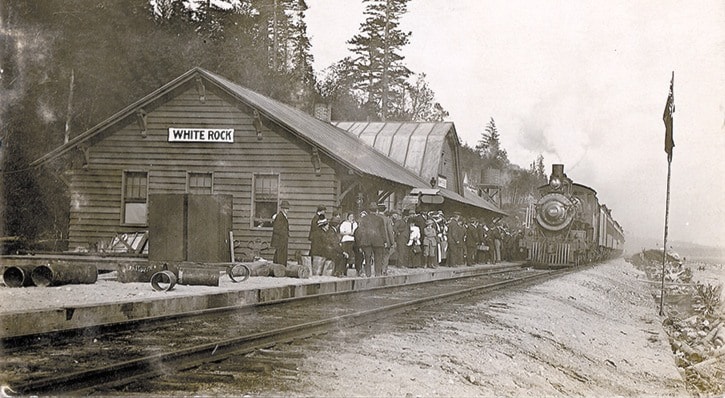Editor:
When it comes to rail relocation, why do people continue to blather on about what life was like in the early-1900s? Their blather has no relevance in 2015.
In reality, our current society needs efficient and rapid transportation for movement of people and goods.
The coastal route was OK when there were only two steam trains per day. However, “dark age” railways have no place in today’s society. It takes four hours and 25 minutes to get from Vancouver to Seattle by train. A journey of a mere 120 miles. A joke, right?
Anyone who has been to Europe is aware of their wonderful rail system. Their high-speed passenger trains travel at 300 km/h and more. Japan and China have similar facilities. B.C. has fallen behind the other developed countries whose economies thrive due to rapid movement of people and goods.
The financial gain to stakeholders over the next 20 years will outweigh the initial costs of the relocation itself.
A modern tunnel-boring machine would make short work of a tunnel between the U.S. border and the existing east-west CN/CP rail corridor, so the blather that other neighbourhoods will be adversely affected is nonsense.
Imagine a family-friendly recreational park along the shoreline, with easy access and hiking/biking trails from the U.S. border to Tsawwassen. Increased tourism would provide a badly needed boost to local businesses.
Why does the 1900 brigade want to deprive businesses and residents south of the Fraser of such opportunities?
To answer the letter from Barry Gaudin (Skepticism over rail relocation, Oct. 30), under the provisions of the Railway Relocation and Crossings Act a simple land-swap arrangement can be agreed – new railway land for old. This act also makes provision for federal funding. City taxpayer dollars need not be involved at all.
The wording of the Oct. 30 PAN online question – “Should $700,000 be spent to see if it’s feasible to relocate the waterfront train tracks inland?” – is biased towards a negative answer. I would bet if the survey had asked “Do you support rail relocation if it will cost the cities nothing?” the answer would have been very different.
(Editor’s note: the $700,000 referred to the sum being considered by the City of Surrey for a feasibility study.)
So, instead of imagining the worst and blathering on about 1900, why not imagine a recreational gem within a few kilometres of all residents and a boosted economy?
Keith Knightson, White Rock
Rail: A Surrey issue
Editor:
Re: Moving tracks ‘does little for Surrey’, Oct. 23.
When I was about four years old, I ignored my father’s warning not to play on an unsupervised construction site, so he gave me what was then called a spanking, now called child abuse. He obviously cared little about my self esteem, only about my safety.
When he subsequently warned me about playing on railroad tracks, I heeded the warning.
I still avoid being on railway tracks. You may assume that I think fences, flashing lights and long loud train whistles are overkill.
In 1979, we lived in Mississauga, Ont., when a train derailed at a level crossing on a Saturday evening. There was a massive explosion and fears of chlorine poisoning, which resulted in several hundred thousand people, including us, being evacuated for three days. There was an escape route both north and south, and the crash was in a primarily industrial area.
Contrast the possibility of such an event along White Rock beach. The area is primarily residential, but there is an escape route to the north. However, such an event at Crescent Beach could trap the entire population between the burning wreck and the water. The escape route would be by boat, helicopter or swimming.
The mayor of Surrey may wish to re-think her position that track relocation is primarily a White Rock issue.
Having said this, I am not sure a realistic solution exists.
Bob Holden, White Rock
• • •
Gee, Mayor Linda Hepner, do you know where South Surrey is? Within a block to two miles of tracks, we live, play and eat and have two to three times as many people as White Rock has.
Read the labels on any container of the hazardous materials in the tank cars of the railway: Do not inhale, touch or spill. Most winds come from the southeast, south or southwest, and the carcinogens spewed by three to six diesel engines per train are worse than any modern-day truck. You now have a long-term health hazard, never mind a ruptured tank car.
Why not sell the $100-plus million city hall, put $50-60 million in a more centralized and not ostentatious city hall, and buy land for a new railway right-of-way?
A. Lappi, Surrey
